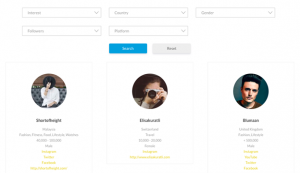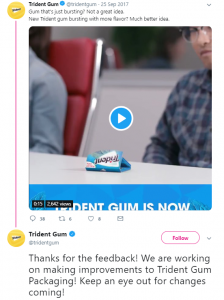by Aaron Baar, Staff Writer, October 18, 2016
It’s well-known that humans are visual creatures. We’re said to eat with our eyes, and we know that a picture is worth a thousand words. Indeed, visual cues are the next frontier in search. Ebay recently launched eBay Collective, which offers a visual search engine to identify images in a photograph and search its inventory for similar objects for sale. Similarly, Google and Pinterest have recently begun focusing on visual search capabilities.
Even now, Google is reportedly showing thumbnail imagery for certain product-based queries (wine glasses, cars) within its mobile search results. In an article on InternetRetailer.com, Magnus Linde, head of analytics at Sticky, cited a study his company did (with General Mills and Clavis Insight), revealing that strong imagery can sometimes trump placement and/or result listing.
“Images do more than confirm what a product is. Shoppers use images ahead of text in order to make purchase decisions quickly,” Linde wrote. “When it comes to gaining visibility in product listings, image matters.”
As does the quality of that image, he continued. In the test, which involved a fictional granola bar product, photos of opened wrappers that exposed the food within performed 20-25% better than other results, even when they didn’t have prime placement. “It is possible for a brand to perform well, no matter their advertisement positioning. It’s possible to make the best of a poor listing,” Linde wrote. “In other words, every product has its sweet spot, if only marketers can craft the right presentation.”
But what makes that presentation? Linde suggests moving beyond simple product shots or stock imagery, such as photos that reveal the actual product beyond the packaging or suggesting some action, and employing alternative colors and clutter-free designs.
In a webinar earlier this year, Nemanja Darijevic, creative and development director of Pixel Road Designs, offered a few extra tips for visual marketing. Among them:
Have Clearly Defined Goals
Ask what it is you want to do with your company or your next campaign, and ensure the images you use align with those goals. In many cases, people prioritize their personal preferences over the company’s goals. Everyone has different preferences, the goal should provide focus.
Use Relevant Imagery
Content that is helpful and relevant to consumers will carry more weight than something that is generic or stock. “Whenever you help someone and inspire them, they will appreciate it and come back for more,” Draijevic says.
Be Personal And Original
Don’t just click on the first image that comes up in a stock photo search (if you must use stock photos). Find something that everyone else isn’t using or, better yet, make your own.
In his presentation, Derijevic cited studies showing consumers were 80% more likely to read a piece of content that included a relevant visual, and those that had a relevant visual received 94% more views than those without one. Moreover, 84% of marketing communications will be visual by 2018, he said. It’s probably best to get started now.
MediaPost.com: Search Marketing Daily
(61)
Report Post




